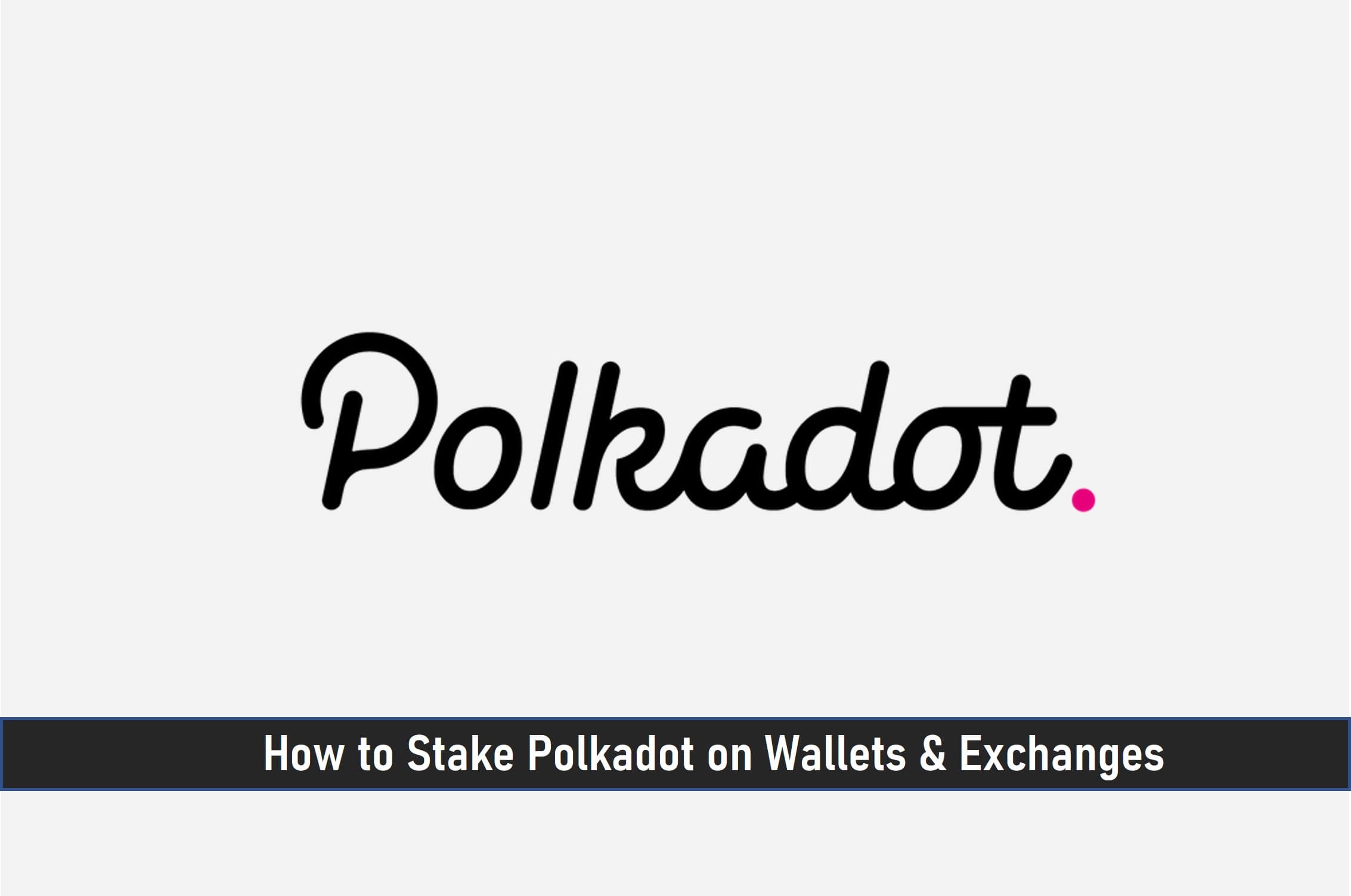
Staking Polkadot (DOT)
Polkadot is a third-generation blockchain network with high ambitions. It aims to address the main pain points of the traditional blockchain ecosystem by providing a new way of solving problems related to scalability, security, blockchain generation, and cross-chain transfers.
Polkadot does this with Parachains, a network of interoperable blockchains, each with its own rules and functions. This is in contrast to blockchains like Ethereum and Cardano, which focus on smart contracts to achieve similar results.
Key Takeaways
• Staking on an Exchange is the easiest way to engage in Polkadot staking with Binance being the number one platform you can use to carry out this activity.
• Masternodes are for Polkadot stake experts as they set up their masternode as a validator.
• The use of virtual machines and hardware components is required if you want to stake Polkadot through masternode. These machines however do not come cheap as a lot of investments are usually put into them.
SEE ALSO: BitBox02 Hardware Wallets – Why You Should Buy One
Unlike Bitcoin, which uses a proof of work (PoW) algorithm to validate transactions and mine new tokens, Polkadot uses a designated proof of stake (PoS) system in which users send DOT tokens to specialized addresses to validate the chain and earn rewards, this process is known as staking.
To explain the rates, let’s look at a traditional savings account…Every month you deposit cash into your account and the bank pays you interest on your savings. He pays you this interest because he uses your money to make money. This is one of the ways the banking system works.
The deposit works the same way. The money you block is used to confirm transactions on the Polkadot network. You receive your “profit” from these tokens as a DOT reward.
You can stake on Polkadot in two ways: as a validator or as a nominator.
A validator is a person who creates blocks. A nominator is a person who votes for someone to become a validator.
If the validator that you voted for with one of your 16 votes wins the block, you will receive a portion of its reward.
Similar to Bitcoin mining, placing stakes on Polkadot as a validator requires a high level of technical knowledge and investment in masternodes 24/7 before you can make a profit.
In addition, anyone can stake on Polkadot as a nominator without any technical experience or significant hardware investment. You can do this by placing funds on a cryptocurrency Exchange or by placing them in a wallet.
Finally, while not technically gambling, another way to get passive rewards for just having a Polkadot is to transfer it to one of the many lending platforms like Celsius or Crypto.com, where they use it to lend to other investors, earning you change during the term of your deposit.
How to Stake Polkadot
There are 3 ways to stake on Polkadot and they are listed below:
Staking on an Exchange
The easiest way to start staking on Polkadot is to Exchange cryptocurrencies such as Binance, Paxful, or Kraken
Using an Exchange for staking is as easy as buying DOT tokens, choosing your favorite Exchange, and depositing the tokens into your Polkadot wallet. Once you have tokens in your wallet, you can easily start placing stakes.
Here’s How to place a Polkadot Stake on Binance
- Sign in to your Binance account.
- Find the “Finance” drop-down menu in the top menu bar and click “Make Money on Binance”.
- Search for DOT in the coin search field.
- You have two options: rate or flexible savings. Press the yellow button “Bet”.
- Select the time you want to bet and find out about APY on the next page.
- Add the amount you want to wager and click “Confirm Purchase”.
Merits of Staking on an Exchange
- The minimum locked amount you can stake can be as little as 1 DOT.
- The Estimated Annual Return (APY) is easy to calculate.
- You can start bidding right away with no installation or equipment costs.
- No technical knowledge is required.
SEE ALSO: 7 Cryptocurrency Derivate Exchanges With Their Own Coin
Demerits of Staking on an Exchange
- Some Exchanges take longer to cancel and unlink (issue) their tokens.
- When a token is expected to be released, you cannot react to sudden price movements.
- What you can win by staking on the Exchange may be reduced due to commissions.
- You cannot select your own authenticator.
- You transfer your voting rights to an Exchange that can vote on protocol changes that you disagree with. You also run the risk of concentrating a lot of power in the hands of Cryptocurrency Exchanges.
Staking with a Wallet
Another way to place stakes on Polkadot is through a wallet or node. You can choose from physical hardware wallets like Ledger to browser wallets like Polkadot JS, and mobile wallets like imToken.
Staking with a mobile wallet like imToken is illustrated below:
- Download the imToken app from the App Store or Google Play.
- Create an identity and save your password.
- Add your currency (s) on the next screen, select “POINT” and press “Confirm”.
- Make a reliable backup of your new memories.
- Find your wallet address and send DOT tokens.
- After making a deposit, click on “Deposit” in your DOT wallet and select a validator.
- Click on “Confirm Authenticator” and enter your bond account.
Pros of Staking with a Wallet
- Choose how your funds are used and which validator you want (as a nominator).
- You’re in control of your own security.
- Once you have transferred DOT funds, all you need to do is redeem your rewards.
SEE ALSO: Trezor One and Trezor Model T Bitcoin Hardware Wallets – Which is Better?
Cons of Staking with a Wallet
- You need more than 200 DOT tokens to participate in wallet staking to ensure you’re eligible for rewards and can cover each transaction fee.
- While choosing your validators gives you more freedom, it comes with its risks. It’s essential to review a validator’s history before nominating them to shield yourself from being slashed and losing rewards.
- Setting up and depositing tokens on your wallet requires a higher level of skill.
Staking with a Masternode
Often reserved for the most hardcore fans, the most complex way to stake Polkadot is via your masternode set-up as a validator. Even Polkadot’s help section recommends having “significant system administration experience” before running your validator.
Since a masternode is always synced with the blockchain, it must remain running at all times with both the speed and the capacity to cope with this load.
Given this, those wishing to go down the masternode route will require significant investment in either hardware or virtual machines (VPS).
Likewise, to be an active validator, you will be required to stake around 2 million DOT tokens to take part.
SEE ALSO: Top 11 Best Cardano (ADA) Wallets for Staking & Storage
Frequently Asked Questions (FAQ)
1. Is there a minimum amount to stake Polkadot?
Yes, there is although it could change from time to time. Currently, the minimum amount needed to stake Polkadot and earn rewards on it is now 40 DOT.
2. Is Polkadot worth Staking?
Polkadot is worth staking as staking in Polkadot would cause an increase in your investments over time without you doing much.
3. Is Polkadot PoS or PoW?
Polkadot operates a Proof of Stake (PoS) mechanism for verifying its transaction into the blockchain or distributed ledger.
4. What is Polkadot (DOT) worth?
At the moment, Polkadot (DOT) is trading in its normal range today and its price could trend upwards or downwards as the market dictates.
[mcrypto id=”5778″]
Final Thoughts
In this article, I covered how Polkadot staking works. I also listed three different ways in which one can stake Polkadot. You can choose to use any of the above-mentioned ways to stake Polkadot keeping in mind that staking Polkadot brings high rewards.
Read More




